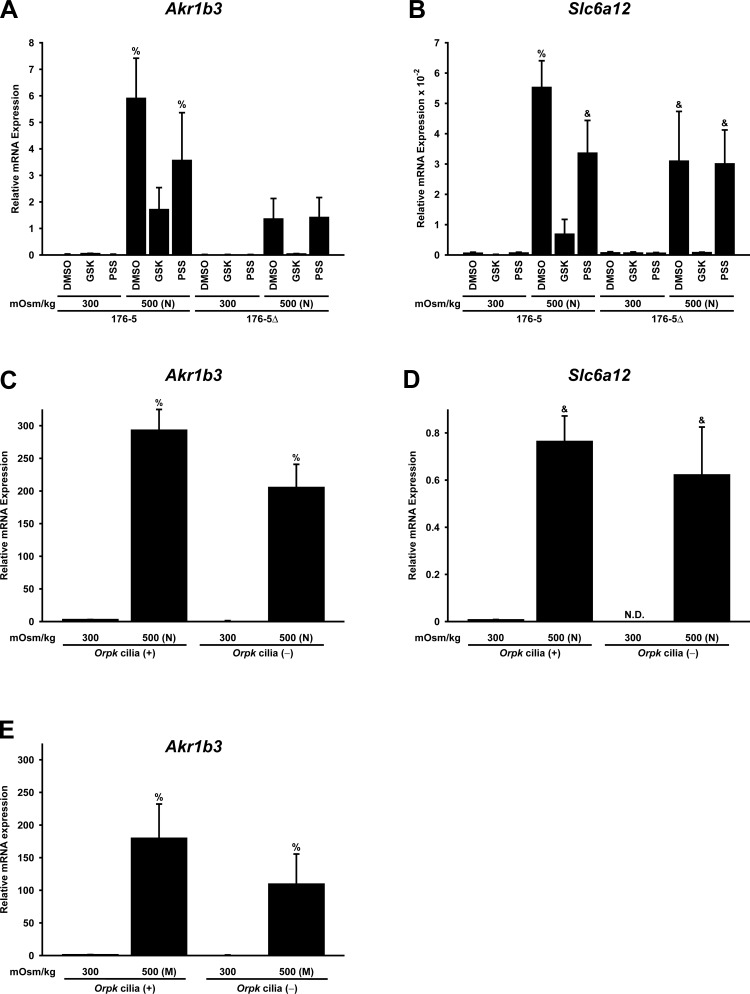Fig. 9.
Hyperosmolality-induced expression of Akr1b3 (aldose reductase) and Slc6a12 [betaine/GABA transporter (Bgt1)] mRNA is affected by the presence of cilia and by stimulation of TRPV4 or TRPM3. A and B: ciliated (176-5) and nonciliated (176-5Δ) renal epithelial cells were treated for 16 h with 0.1% DMSO, a TRPV4 agonist [100 nM GSK1016790A (GSK)], or a TRPM3 agonist [100 μM pregnenolone sulfate (PSS)] at 300 mOsm/kg or 500 mOsm/kg [adjusted with NaCl (N)]. RT-qPCR was performed to determine mRNA expression relative to the reference gene B2m. Hyperosmolal stress induced Akr1b3 and Slc6a12 expression in both cell lines, but the response was greater in ciliated than nonciliated cells. The TRPV4 agonist abrogated hyperosmolality-induced Akr1b3 and Slc6a12 expression in both cell lines (although abrogation of Akr1b3 was not significant for the nonciliated cells). The TRPM3 agonist attenuated hyperosmolality-induced Akr1b3 and Slc6a12 expression only in ciliated cells. C and D: to examine a second cell line, expression of Akr1b3 and Slc6a12 was measured in Orpk cilia(+) and cilia(−) renal epithelial cells exposed to isosmolal (300 mOsm/kg) and hyperosmolal [500 mOsm/kg; adjusted with NaCl (N)] conditions. Hyperosmolality-induced expression of Akr1b3 was enhanced by the presence of cilia. A trend toward increased hyperosmolality-induced Slc6a12 expression was observed in Orpk cilia(+) cells compared with cilia(−) cells, but the increase did not reach statistical significance. Expression is relative to the reference gene Sdha. ND, not detectable. E: to examine another osmolyte, expression of Akr1b3 was measured in Orpk cilia(+) and cilia(−) renal epithelial cells with osmolality increased to 500 mOsm/kg by addition of mannitol (M), rather than NaCl. Mannitol-induced expression of Akr1b3 was enhanced by the presence of cilia. Expression is relative to the reference gene Sdha. %Significantly different (P < 0.05, by Student-Newman-Keuls method) from all other conditions. &Significantly different from all conditions except each other. No other comparisons were significantly different. n = 3 (A, B, and E) and 4 (C and D) experiments.

